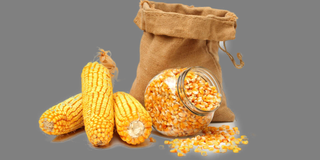Millers demand yellow maize as shortage bites

Millers have petitioned the government to introduce an array of measures, including allowing yellow maize to be processed for consumption.
Millers have petitioned the government to introduce an array of measures, including allowing yellow maize to be processed for consumption, to tackle the biting grain shortage and cushion consumers against rising prices of flour and other food items.
The millers want the government to do away with barriers on cross border trade and facilitate unrestricted flow of grains into the country.
They say the current stock of six million bags of white maize can only last for two months.
“Consumers are struggling with increasing commodity prices. The implementation of these recommendations will mitigate the rising costs of wheat and maize-based commodities should the situation persist,” the companies said in their petition.
The millers, who held talks with President William Ruto and his Deputy Rigathi Gachagua on January 23, recommended a review of the Kenya Bureau of Standards (Kebs) regulations to allow yellow maize to be used as food as it emerged that importing 10 million bags of white maize would take longer than expected due to low stocks on the international market.
The firms also want the government to waive duty on wheat imports in an effort to reduce prices for consumers and harmonise standards for cess and levies across the counties to meet the current shortage.
Duty waiver
According to the millers, there is need to extend the duty waiver on yellow maize for six months to reduce pressure on white maize and lower the cost of animal feeds.
“It is also critical that the government introduces forex allocations for those in the food industry as is happening in the fuel sector,” added the millers in the recommendation to the government.
Maize prices are expected to remain high as it emerges that it will take long before the 10 million bags of imported duty-free grains arrive in the country.
The millers want to import maize at Sh6,000 per 90kg bag compared to Sh4,800 in the local market, which will push the cost of flour higher.
According to the Ministry of Agriculture, the 10 million bags of duty-free maize will not be available this month as planned.
“We expect the duty-free maize to arrive in Kenya early next month due to logistical challenges, including the delayed selection of the importers,” Crop Development Principal Secretary, Kello Harsama, said.
The ministry has allowed traders to import 900,000 tonnes of duty-free white maize and 600,000 tonnes of duty-free milled rice from February to August.
“This will enable the country to have adequate stocks to last until next harvest from July to August. The duty waiver shall apply to white maize and milled rice imported by August 6,” said a notice by the State Department for Crop Development.
The government has approved 30 companies to import maize but none has done so.
Apart from South Africa, other traditional maize suppliers like Zambia, Tanzania, Malawi, Uganda and Ethiopia have no stocks.
The country’s annual maize production is estimated at 3.2 million tonnes against a consumption of 3.8 million tonnes.
The deficit is normally bridged through imports from East Africa Community (EAC) member states.
The country produces approximately 100,000 tonnes of wheat against an annual demand of 2.4 million tonnes, relying heavily on imports.
“Kenya imports 60 per cent of the deficit mainly from Ukraine and Russia. The current situation in the two countries has disrupted the supply chain. As a result, players in the industry have turned to the expensive wheat from the United States, Argentina, Australia and Canada, adding to their operational costs,” the millers said.
Maize prices increased from Sh2,850 per 90kg bag in 2021 to Sh4,200 in 2022 – a 47 per cent rise.
The situation was attributed to persistent drought and reduced inflows from EAC member states.
Maize export
Wheat prices rose from Sh3,800 in 2021 to Sh6,000 per 90kg bag in 2022.
The latest global food index for December 2022 by the Food and Agriculture Organisation (FAO) shows a rise in maize and rice prices by 6.2 per cent due to tighter availability of the commodities and strong demand in Asian exporting countries.
“World maize price increases have been influenced by strong demand for export from Brazil and Paraguay and strong import demand in the European Union. Lowered stocks in Ukraine due to disruption in production are largely behind the change,” FAO said in its report.
Maize prices in the North Rift, the country’s bread basket, have stabilised, with 90-kilo bag going for Sh4,800.
The rates are expected to shoot up due to the delay in the arrival of imports.
“The maize and rice prices are expected to remain volatile due to global market forces of supply and demand,” said Henry Ogola, an import and export expert.
According to the Kenya National Bureau of Statistics, Kenya has imported an average of 295,092 tonnes of maize annually over the past five years.
According to annual agriculture reports, yields in the Rift Valley have been declining.
Production dropped from 27 million bags to 21 million last season.
Harvesting of maize is ongoing in parts of the North Rift, with the country projected to realise 30 million bags against an annual consumption of 45 million.
Uasin Gishu County will harvest about 4.5 million bags, with more than 2.5 million being released to the market.
Trans Nzoia realised 5.3 million bags of maize while it consumes about two million.
An estimated 3.3 million will be released to the market.





